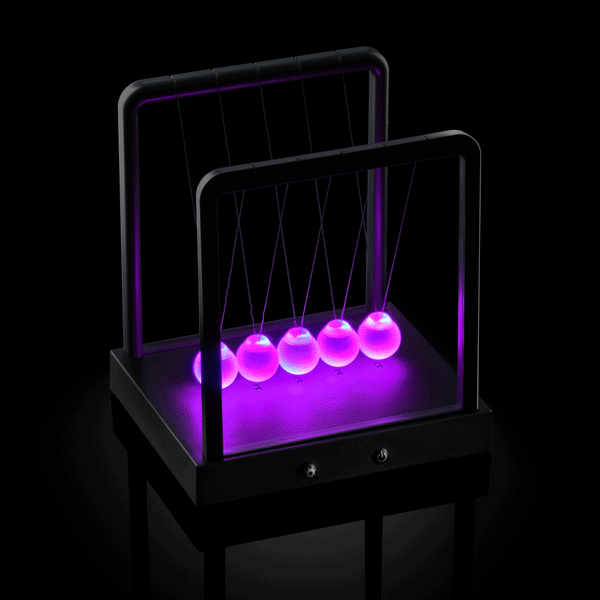Newton's Cradle!

The gif given above demonstrates the working of a Newton’s cradle .
What does this amazing science toy explain to us?
Try my World of Physics to solve many problems like this one.
This section requires Javascript.
You are seeing this because something didn't load right. We suggest you, (a) try
refreshing the page, (b) enabling javascript if it is disabled on your browser and,
finally, (c)
loading the
non-javascript version of this page
. We're sorry about the hassle.
Newton’s cradle is a device that demonstrates conservation of momentum and energy using a series of swinging spheres. When one sphere at the end is lifted and released, it strikes the stationary spheres, transmitting a force through the stationary spheres that pushes the last sphere upward. The last sphere swings back and strikes the still nearly stationary spheres, repeating the effect in the opposite direction . The device is named after 17th-century English scientist Sir Isaac Newton. It is also known as Newton's balls or Executive Ball Clicker. Despite its seemingly simple design, the Newton's cradle and its swinging, clicking balls isn't just an ordinary desk toy. It is, in fact, an elegant demonstration of some of the most fundamental laws of physics and mechanics.
On small cradles, the balls are hung from the crossbars by light wire, with the balls at the point of an inverted triangle. This ensures that the balls can only swing in one plane, parallel to the crossbars. If the ball could move on any other plane, it would impart less energy to the other balls in the impact or miss them altogether, and the device wouldn't work as well, if at all.